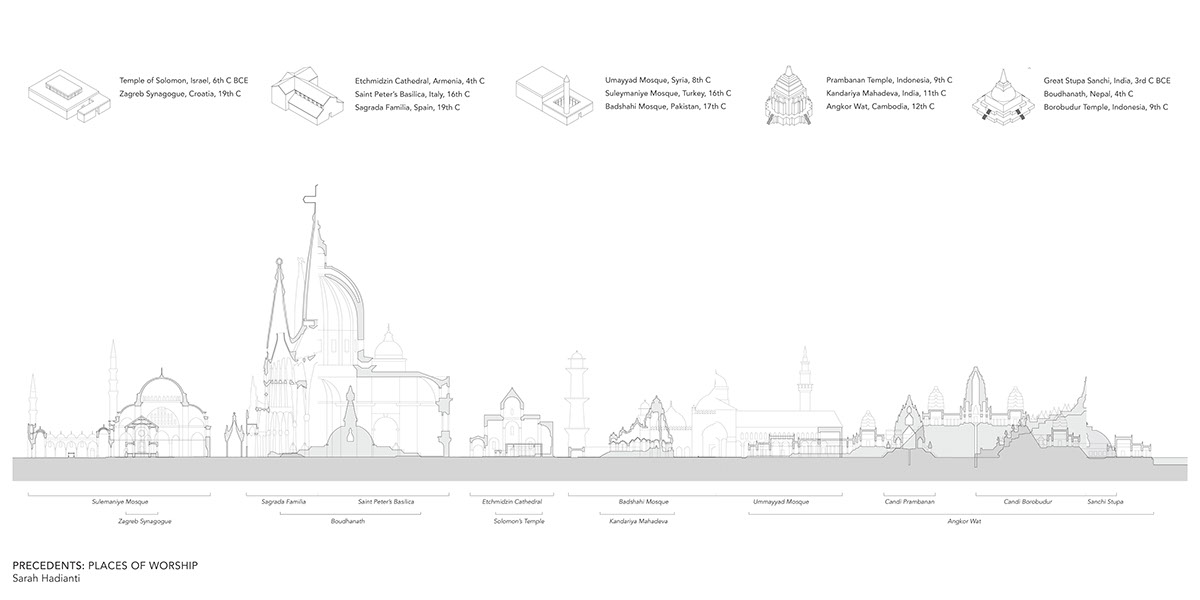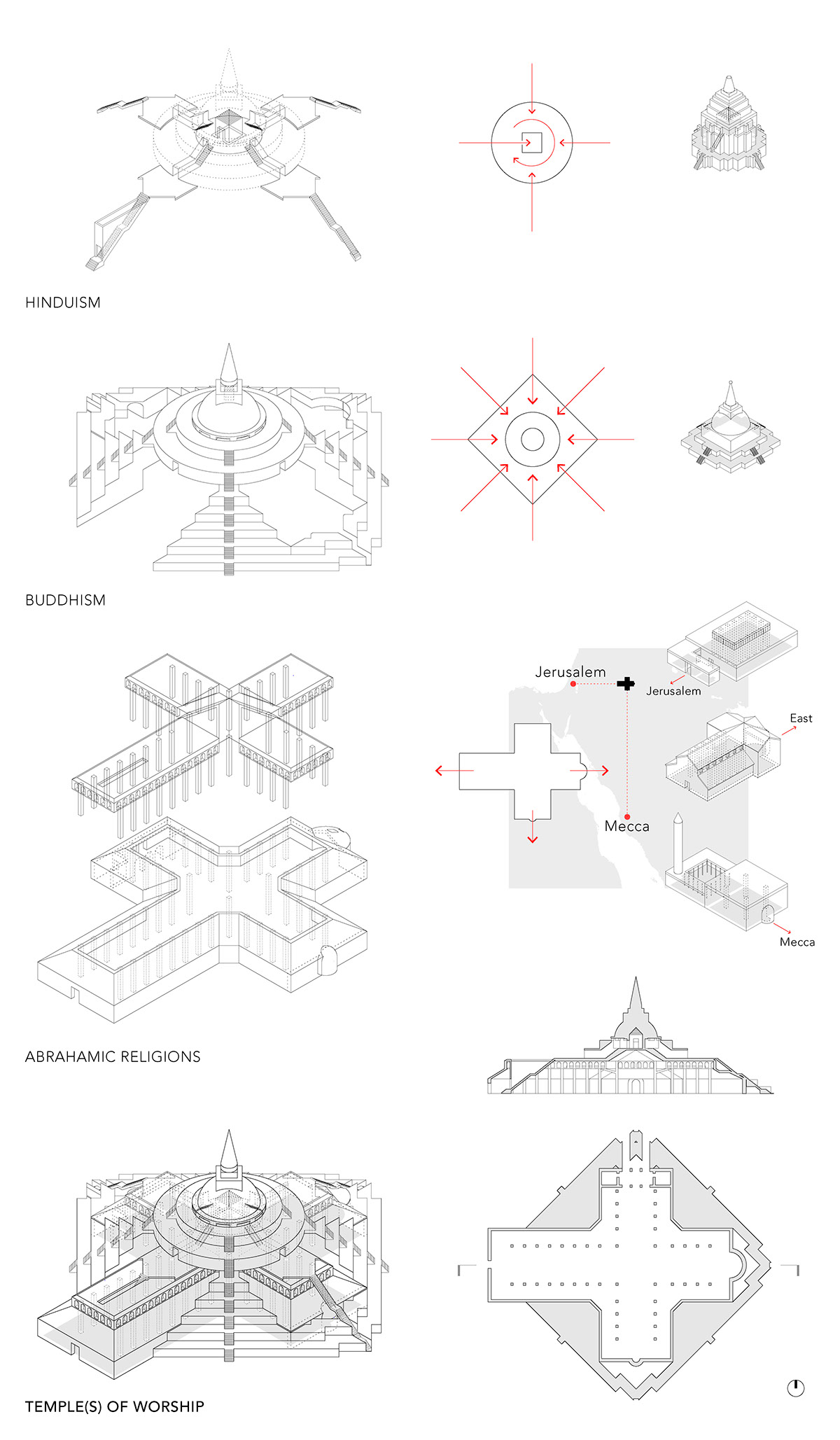Cultures are commonly viewed in terms of ethnicity or country of origin. However, culture in its most general definition is a way of life of a group of people who share similar behavior, beliefs and values.
Therefore, in investigating commonalities and differences of groups of people that extend beyond national borders, five different religious groups (from Judaism, Christianity, Islam, Hinduism and Buddhism) were studied through their architecture of worship.
Samples from each were drawn from various cities and time periods.
The unifying theme across the different groups is the belief of a greater power that structures meaning to this life in reaching the next one or beyond this one. Manifestation of such beliefs shapes their spaces differently whether by rituals, symbols, or cartographic orientations. Similarities with the use of symmetry is inherent across all temples sampled. Major differences relate to scale, proportions and layers of spaces that lead to the central area of worship.
For example, the 12th Century Hindu Temple Angkor Wat in Cambodia has multiple layers and pillared halls that progress visitors in an upward ascent to the central tower. Similarly, the 9th Century Buddhist Temple Candi Borobudur in Indonesia also has multiple layers involving an upward ascent to its core. This notion of an elevational change in climbing closer to the skies is contrasted in the 16th Century Turkish Mosque of Suleymaniye and 16th Century Italian Church of Saint Peter such that the vertical connection to the Divine is instead expressed in a large space with intricate ceiling details that filter light.
Samples from each were drawn from various cities and time periods.
The unifying theme across the different groups is the belief of a greater power that structures meaning to this life in reaching the next one or beyond this one. Manifestation of such beliefs shapes their spaces differently whether by rituals, symbols, or cartographic orientations. Similarities with the use of symmetry is inherent across all temples sampled. Major differences relate to scale, proportions and layers of spaces that lead to the central area of worship.
For example, the 12th Century Hindu Temple Angkor Wat in Cambodia has multiple layers and pillared halls that progress visitors in an upward ascent to the central tower. Similarly, the 9th Century Buddhist Temple Candi Borobudur in Indonesia also has multiple layers involving an upward ascent to its core. This notion of an elevational change in climbing closer to the skies is contrasted in the 16th Century Turkish Mosque of Suleymaniye and 16th Century Italian Church of Saint Peter such that the vertical connection to the Divine is instead expressed in a large space with intricate ceiling details that filter light.


This investigation is geared towards highlighting the similarities and possibilities in sharing the same space without losing each religious group’s essence. The idea is to encourage tolerance of religious/cultural difference, through an “inverse dialectical process, by letting that space influence its culture” --essentially a new transcultural, or trans-religious, embrace.
Ideally this Temple(s) of Worship can be located in multiple places, however due to specific and relative orientations that the Synagogue and Mosque require, make it impossible to duplicate in different locations. In this case, the temple(s) is designed to be located East of Jerusalem and North of Mecca.
This exercise reveals a need for a degree of separation achieved sectionally, in order to encompass all five cultures in one place. Currently, the Buddhist temple is the most secluded as worshipers need not enter the other believers’ space in order to practice their rituals. Whereas, the Abrahamic religions share a space with no dividing walls, merely nooks and columns because the rituals and congregational gatherings occur at different times that ideally result in no necessity of strict wall divisions, which allows for others to passively participate and observe.